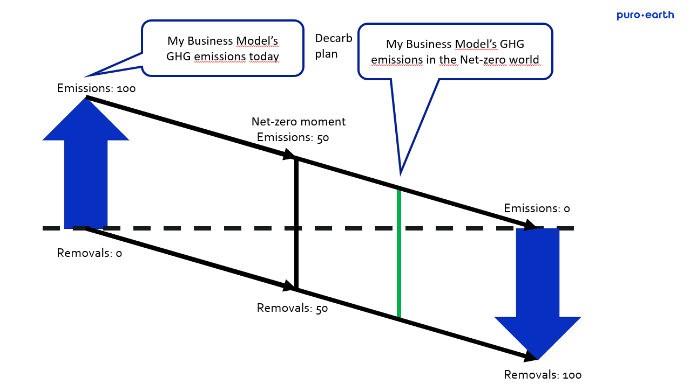I have been rethinking the carbon markets in the light of three recent reports: the Taskforce on Scaling Voluntary Carbon Markets , Carbon180’s In search of carbon removal offsets, and Science-Based Targets Initiative (SBTi) Net-Zero target setting in the corporate sector.
I welcomed the Taskforce’s idea of Core Carbon Principles. It is similar to the leading idea of the Puro.earth standard from the beginning - harmonization across different carbon removal methods. However, in their case it would set criteria for a ton of carbon that is either avoided/reduced or removed/sequestered. I fail to see how mixing avoidance and removals helps understanding and clarity. At the moment, there is confusion in the offset business and it leads to lack of action from corporates.
For the past 20 years or so – since Kyoto – avoidance offset thinking has prevailed. The thinking has been: reduce emissions where it is most economical (or most convenient?). If your own emissions are too hard to avoid, pay someone else to avoid their emissions – only make sure that they would not have done it without your payment. The results have been poor, as global emissions have continued to grow.
Anthropogenic (manmade) carbon emissions are the result of our actions, as are manmade carbon removals. If the title of the Taskforce report would have been “Taskforce on Scaling Voluntary Carbon Removals, I would agree that
- Rapid scaling is needed
- Voluntary action is driving the transition
- A core carbon removal reference contract is a good idea to create liquidity – in simple terms, to move the industry from buyer confusion and paralysis to clarity and action.
Carbon180’s recent search for high-quality removals gives a good picture of the current confusion. They went on a quest to find manmade removals to counterbalance their emissions. They too – despite being climate experts – were challenged by the offset mix, avoidance and removals, in the current market. Once they found some offsets that could be carbon removal they found it difficult to assess their quality. At the end, they didn’t find high-quality carbon removal credits that they could also afford. One example of current prices comes from Stripe’s purchases who “paid between $100–$800/ton for carbon removal that met their high thresholds”.
Now, Stripe decided to select projects that are quite immature, exploratory and may not yield any removal at the end of the day. We need trailblazers who want to help pioneering things get started.
However, this should not be interpreted as the “right price” for carbon removal. There are plenty of processes that sequester more CO2 than they emit and produce reasonably priced verified negative emissions. They just need to be identified and boosted. This is why Puro.earth exists.
Having clear and commonly agreed criteria as to what qualifies as high quality carbon removal is essential and would have helped Carbon180 find projects (or processes) to suit their end goals.
In their fresh net-zero guidance, SBTi is advising corporates to be accountable for their own emission reductions and neutralize any residual GHG emissions with an equivalent amount of carbon removals. According to SBTi, responsible corporates should start their net-zero path by “ensuring the viability of the business model in a net-zero economy”. That is a very different perspective than finding emission avoidance where it is most economical.
Puro.earth was founded to enable just what SBTi urges corporates to do. We believe that a corporate’s reductions and removal development should start at the same time in order to minimize the time it takes to reach their net-zero moment.

|
Exhibit 1. A corporate’s net-zero moment is reached when their residual emissions are neutralized with an equivalent amount of carbon removals.
It is time to start thinking that your corporate emissions are really your own responsibility. So, decide what is the level of your residual emissions, and we offer you the instruments to remove them.
Antti Vihavainen
CEO of Puro.earth
Are you ready to include carbon removal in your climate actions? Welcome to learn more about our carbon removal suppliers and don't hesitate to contact us.
In this text Avoidance means emission reductions done by another organization outside of the direct control of your corporate i.e. traditional carbon offsets. Removal means Negative Emissions: Anthropogenic activities removing CO2 from the atmosphere and durably storing it in geological, terrestrial, or ocean reservoirs, or in products. It includes existing and potential anthropogenic enhancement of biological or geochemical sinks and direct air capture and storage but excludes natural CO2 uptake not directly caused by human activities. (IPCC definition)

